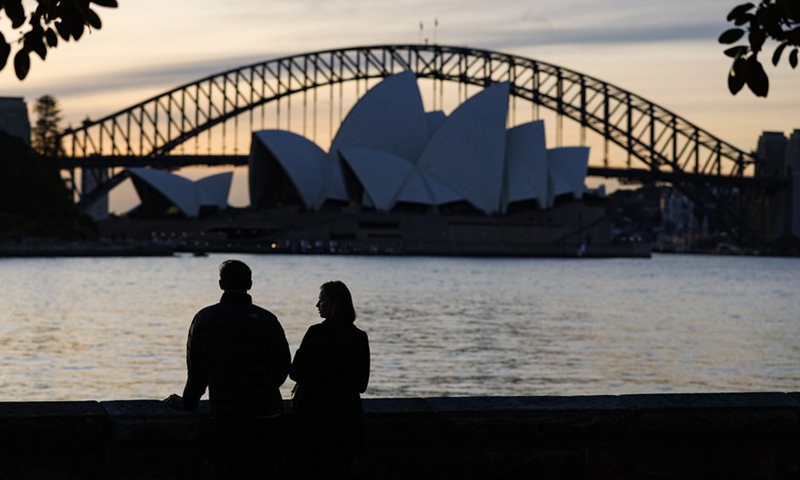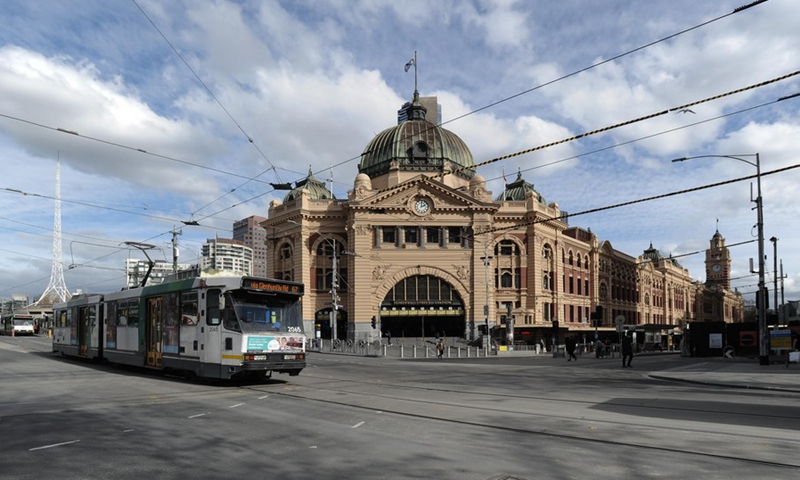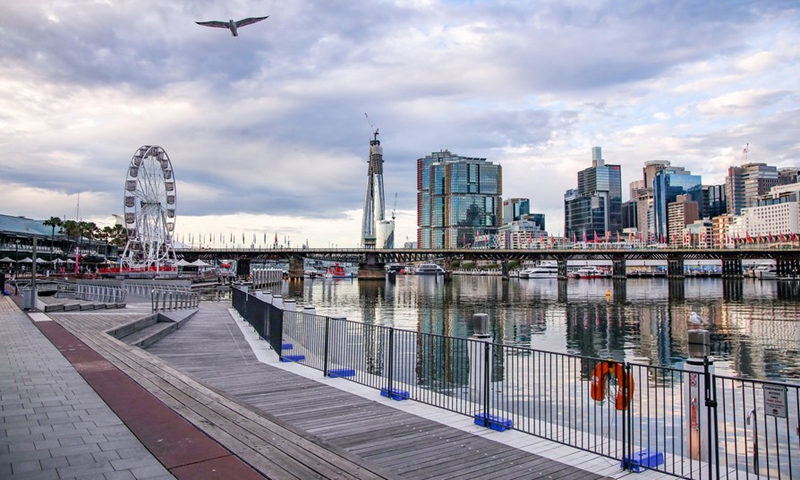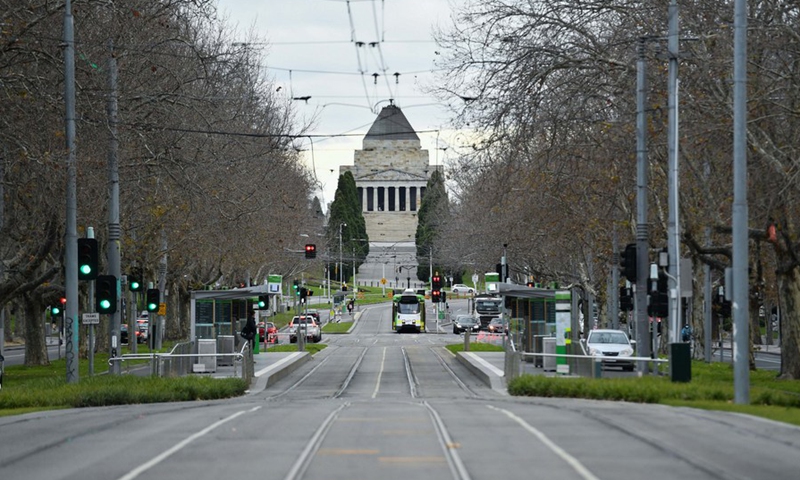Aussie universities seek lifeline amid international student drought

People rest in front of the Sydney Opera House in Sydney, Australia, on Aug. 6, 2020. (Xinhua/Bai Xuefei)
Australian universities are renowned for drawing millions of students from across Asia and the world, with overseas enrolments making up well over a quarter of Australia's higher education students.
COVID-19 and associated travel bans unexpectedly turned off the flow of international students and the vital revenue they bring to some of Australia's most prestigious institutions.
A billion-dollar cash injection announced as part of the federal government's big-spending pandemic budget was welcomed, but will it be enough to preserve what is great and highly sought after about Australia's universities?
News that a small number of international students would be allowed to return to Australia later in the month came as a ray of hope not just for the students eager to get back to their studies, but for the higher education system as a whole.
The pilot program by Charles Darwin University (CDU) in Australia's Northern Territory will allow up to 70 overseas students to travel from Singapore to Darwin, stemming from a range of source countries including China and Southeast Asia.

Photo taken on Aug. 3, 2020 shows a street in Melbourne, Australia. (Photo by Bai Xue/Xinhua)
While health concerns were stressed as first and foremost, CDU Deputy Vice-Chancellor Global Strategy and Advancement, Andrew Everett also acknowledged the massive financial benefits that international students have brought to Australia, describing them as "critical to the university's growth."
In 2019, international students made up close to one third of those studying at Australian universities, with Chinese students accounting for 37.3 percent of all overseas enrolments with 164,458 students.
The year before, international students delivered around 9 billion (6.4 billion US dollars) in revenue to Australian universities, according to modelling by Peter Hurley from Victoria University's Mitchell Institute.
Hurley's analysis showed international enrolments accounting for around 58 percent of total student revenue at two of Australia's most prestigious "sandstone" universities, the University of Melbourne and the University of Sydney.
International enrolments also play a disproportionate role in the coffers of Aussie universities due to overseas students paying their fees up front, compared with domestic students who are able to defer payments free of interest on a government-run loan scheme.

Photo taken on March 30, 2020 shows the view of empty Darling Harbour in Sydney, Australia. (Xinhua/Bai Xuefei)
Sector representatives, Universities Australia estimated that by 2023, COVID-19 could erode 16 billion Australian dollars worth of revenue (11.4 billion US dollars) from institutions across the country.
"We can't pretend that won't have a big impact," Universities Australia Chief Executive Catriona Jackson said at the time.
"Not only does that revenue support the staff and facilities to educate the next generation of skilled workers, it also pays for much of the research and innovation that keeps Australia internationally competitive."
The total number of job cuts already announced this year has topped 11,000, according to the National Tertiary Education Union, not taking into account several thousand casual and fixed-term staff who have also seen their positions disappear.
Universities Australia predicted that the total number of jobs stripped from the sector could reach 21,000 by the end of the year, on top of potentially irreversible damage to universities' research capacity and reputation should the ban on international arrivals continue.
Popular estimates suggest up to 7.6 billion Australian dollars could be ripped from university research programs over the next four years due to the loss of international students fees.
Since the start of the pandemic, educators unions and sector representatives have repeatedly called for greater government assistance, but the plight of universities initially struggled to gain sympathy from everyday Australians.
This is partially due to the flawed view of universities as highly-profitable private businesses, and partly due to an enduring criticism that by garnering an overreliance on international students, the universities chose to compromise standards for revenue and brought the crisis on themselves.
Chief Executive of the Group of Eight (Go8), which represents Australia's eight most prestigious universities, Vicki Thomson said failing to support research and knowledge building institutions could have long term and wide reaching effects for the country.

Photo taken on Aug. 3, 2020 shows a street in Melbourne, Australia. (Photo by Bai Xue/Xinhua)
"We have been quite desperate in the past months as researchers were being stood down and research programs faltered or halted all because we were missing the International student fees which previously paid for Australia's research," Thomson said.
"To fail to support Australia's globally ranked, research industry is to fail to support Australia's national interest... It is to fail to support our innovation and discovery-based industries, the industries that could lead Australia into the future."
In response, the federal government included an additional 1 billion Australian dollars (710.5 million US dollars) to support university research programs in its COVID-focussed annual budget released Tuesday evening.
Federal Treasurer Josh Frydenberg said the funding would help back Australia's "best and brightest minds, whose ideas will help drive our recovery."
The government also said it will invest millions of dollars in creating a Strategic University Reform Fund (SURF), aimed at encouraging universities to undertake novel projects in areas of "government priority."
SURF aims to strengthen links between universities and the business world, better addressing issues of local concern, and improving the commercial potential of applied research.
Go8 representative Thomson welcomed the stimulus and thanked the government for acknowledging the important role that research plays for the country -- while others criticised it as insufficient and indifferent to the massive job losses being endured by the sector.
"With no idea when or even if that market will ever recover, the silver lining is that Australia can once again claim it is funding its own research. That will be welcomed much further afield than our university campuses," Thomson said.
A massive restructuring of Australian university course fees currently underway is also set to shake up university campuses indefinitely -- aimed at encouraging students to choose more "job-ready" subjects such as nursing and engineering over humanities and law.
The impacts on a system already in turmoil is yet to be seen, but with the demonstrable benefit international students bring to Australia and plans to drive enrolments back up as early as 2021, they will no doubt be felt around the world.
